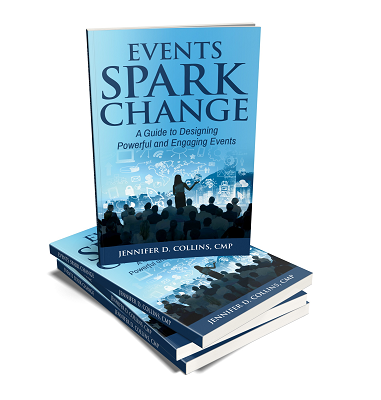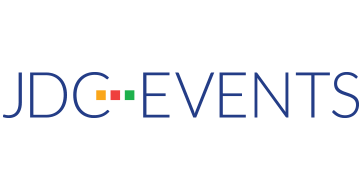11 Oct The SPARK℠ Model

Events Spark Change is the complete guide to designing powerful and engaging events using the SPARK℠ model. Get your copy at the bottom of this post.
Events spark change. Whether an event planner’s goal is to train a team, share a new idea, build product demand, or enhance relationships with stakeholders, every event’s desired outcome is some sort of action. That doesn’t mean an event must be high-profile or complex in its planning. Even the smallest event or can have significant outcomes if there is intentional upfront planning for the event to make that kind of difference.
What matters is the meaningful thought and preparation that goes into planning the event. That is the driver behind any successful event—how much went into considering upfront the goals and the outcome of the event? Developing that understanding of the focus of event planning let me to create the SPARK℠ Model.
The SPARK Model is a plan for designing meetings and events that encompasses five phases: Sensory, Purpose, Activations, Resources, and Know-How. Each of these phases represents a distinct guideline designed to move the planning of an event forward.
Here is a breakdown of the five phases:
Sensory. The sensory phase takes into account the impact of the five senses when designing a meeting or event. Studies of the brain have found that stimulating a person’s senses helps congeal an experience in a person’s memory. The more memorable an event is, the greater participants will engage with the information gained from that event. When planning an event, think of ways to stimulate the five senses—especially smell, the most powerful of the senses.
Purpose. This phase is about defining the objective of the meeting or event. It is also about taking the time to determine whether an event is the best format to use for the objective, and if so, any expected outcomes.
Activations. In this phase, the objectives determined by the purpose phase are set in motion. That includes deciding how to execute the sensory elements that will create the memorable experience for participants in the meeting or event.
Resources. The resources phase identifies time, budget, personnel and other assets that will be used to construct the event.
Know-How. This phase considers the human resources—skills, expertise, relationships—available to meet the objectives of the event. Know-how also encompasses outcomes—how to evaluate the events for insights on designing future programs.
The SPARK Model is a valuable tool to kickoff planning for an event or meeting, with the phases building on each other. However, you’ll need your even planning intuition to best put it into practice. After all, each event is unique and will come with its own set of challenges. Use the SPARK model as a series of guideposts to bring out the best in your event planning abilities!

Jennifer D. Collins is the founder, President, and CEO of JDC Events. She is a Certified Meeting Professional (CMP), Digital Events Strategist (DES) and well known events industry thought leader. She is Vice Chair of the Board for WBEC Metro NY and WBEC Greater DMV, a member of the Women’s Presidents Organization (WPO), and the Author of Events Spark Change: A Guide to Designing Powerful and Engaging Events.



